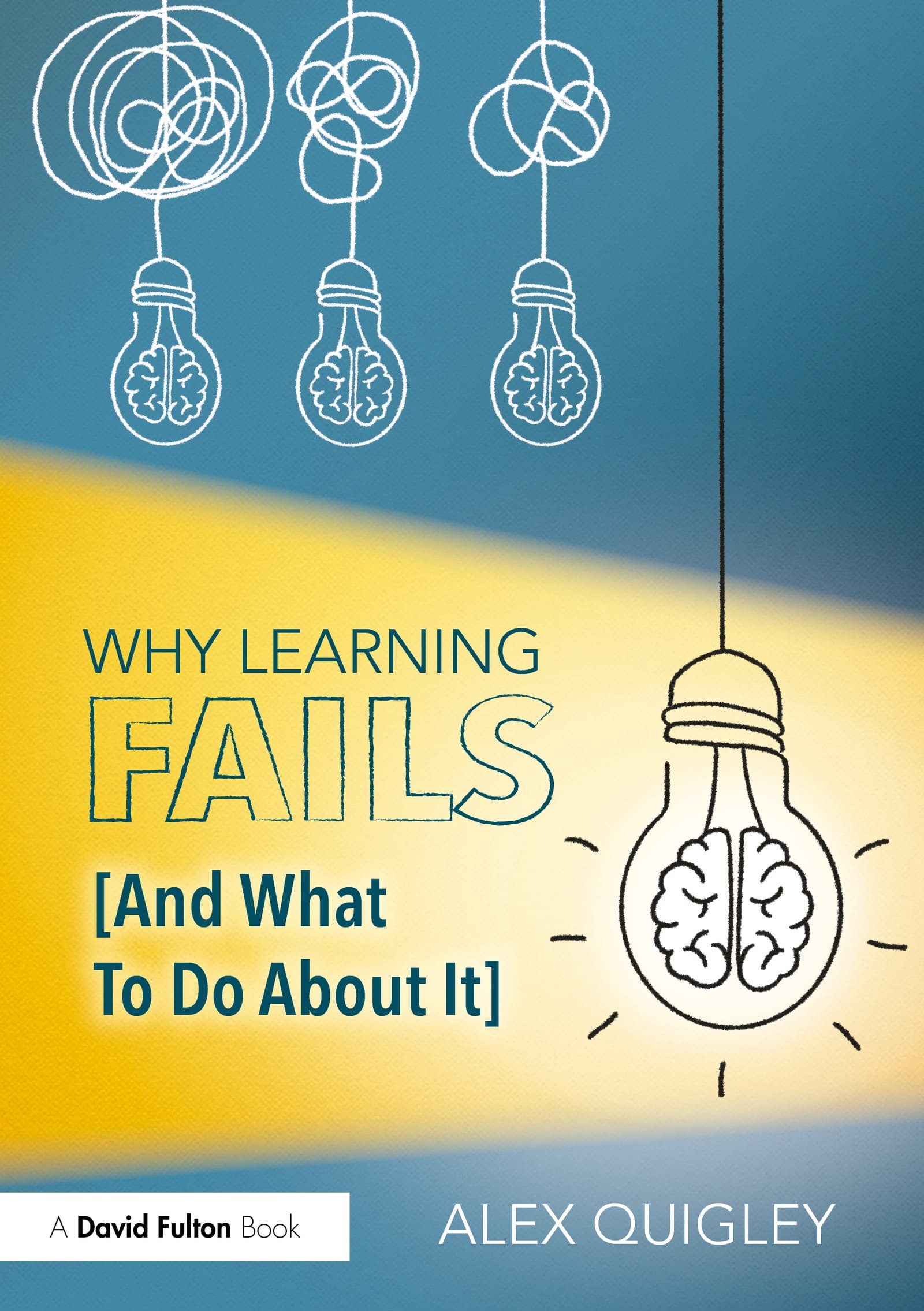Alex Quigley's 'Why Learning Fails'
Last week the magnificent Roger Federer gave a commencement address at Dartmouth. While discussing his career, he pointed out a startling fact:
In tennis, perfection is impossible... In the 1,526 singles matches I played in my career, I won almost 80% of those matches... Now, I have a question for all of you... what percentage of the POINTS do you think I won in those matches?
Only 54%.
So this supreme athlete ‘failed’ on a micro level almost as much as he succeeded.
‘Failure’ is also the inevitable currency of the classroom, the waters in which we swim. When you start a career teaching, you might well be bright-eyed and optimistic, imagining that there is some straightforward route between teaching and learning, but the reality of learning quickly asserts itself: a teacher is battling entropy and the many ways our pupils ‘fail’ to learn something.
I have used those inverted commas because those ‘failures’ are of course part of a natural process, and often as understandable as Roger Federer ‘losing’ 3 or more points in an advantage game that he ended up winning. We come to realise that we can increase our success level by good classroom management, evidence-based teaching and a determination to address the natural gap between teaching and learning.
This is the territory that Alex Quigley covers in his new book Why Learning Fails (and what to do about it) (Routledge 2024). A former English teacher, he has written a particularly valuable trilogy of books that are helpful for teachers of all subjects at all levels: Closing the Vocabulary Gap, Closing the Reading Gap and Closing the Writing Gap. He has a particular gift for compressing and clarifying academic research for classroom practitioners (that research is referenced at the end of each chapter after ‘reflection questions’.
In this book he identifies eight key elements that contribute to learning failures - issues to do with working memory, prior knowledge, misconceptions, overconfidence, planning strategies, independent learning, attention and ‘miserly mental effort’, and falling motivation. This could seem like quite an intimidating suite of ‘depressors’, but Quigley shows that each can be addressed with sensible strategies. For instance, in the chapter on ‘patchy prior knowledge’ there are ways to address those patchwork patterns of variable knowledge such as reading clusters, anticipation guides, graphic organisers and boundary examples (if you’re not familiar with any of these, they are clearly explained in the book).
Above all, Quigley is concerned with our ‘cognitive miserliness’:
We have evolved to forget what we do not find meaningful and to avoid too much hard thinking.
So we need to make particular efforts to address one-shot thinking, and it is our job as teachers not just to focus on the content of our subjects but to help educate our pupils on strategies for learning better. The good news is that we can do this: we can reduce the inevitable entropy. As Roger Federer says, effortless is a myth. Why Learning Fails is a most helpful guide to where we should all be directing our efforts, teachers and pupils alike.
